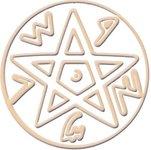The Institute publishes the Qedem Series (edited by Sue Grodetsky until 2013 and by Nava Panitz-Cohen from 2014).
These monographs are the main venue of publication for reports on the Institute’s excavations and their finds.
The volumes are published in English and appear in three formats: Qedem, Qedem Reports and Qedem Dig.
In addition to Qedem, research conducted by the Institute’s faculty and advanced students are published in books and peer-reviewed international journals.
To order the Qedem and Qedem Report volumes, please contact:
Israel Exploration Society
P.O.B. 7041
Jerusalem 9107001, Israel
Tel.: 972-2-6257991
Fax: 972-2-6247772

